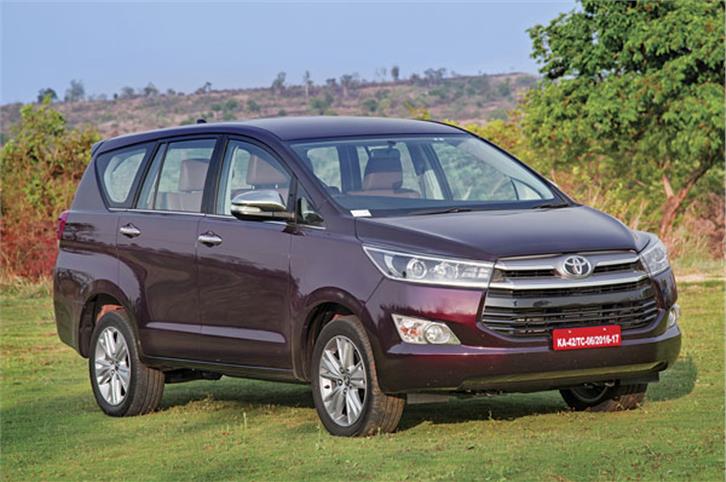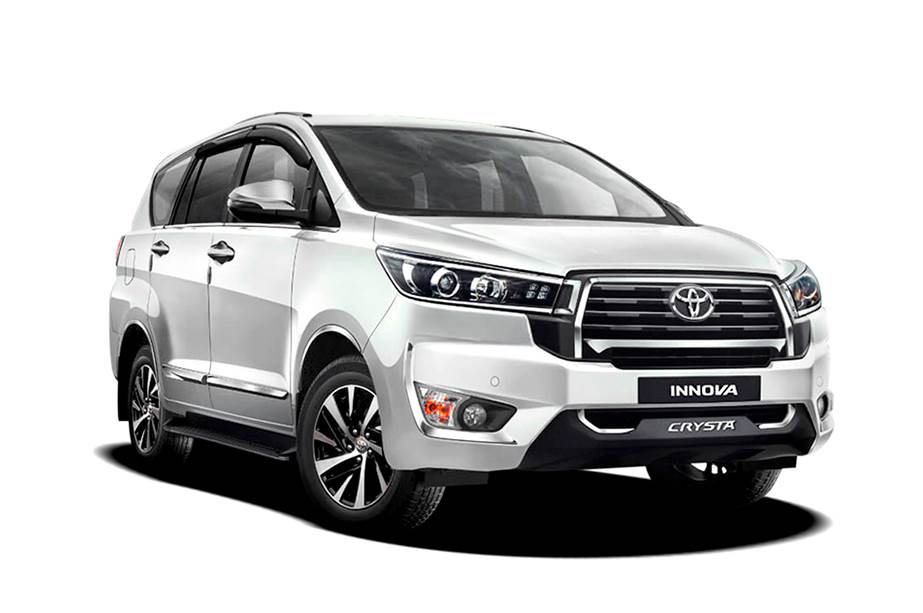Toyota Innova Crysta review, road test
After 11 years, Toyota has finally launched the all-new Innova and taken it even more upmarket. We find out if it’s worth the extra premium.
Published on Jun 27, 2016 02:53:00 PM
3,30,693 Views
Follow us on

The Crysta comes 11 years after the original Innova.

Feels as heavy as a tank, but is equally solid and reliable.

Full marks to Toyota for completely modernising the design and yet retaining the essence of the Innova’s character. Although every body panel is new, the overall silhouette and proportions leave you in no doubt that this is an Innova and a good looking one at that. The long nose is still the defining characteristic and the car is now distinguished with a muscular bonnet that has a sharp ‘V’ and a very prominent and large SUV-style grille. The stretched headlamps housing projector lenses look sleek and come with an LED cluster unit.
The styling is sharper and more angular than before and is quite evident in the sides where the most striking design feature is the sharply raked kink in the D-pillar. There’s also a strong shoulder line and a sharp crease running through the doors that liven up the Crysta’s massive flanks. The inverted L-shaped rear lamps, which are now horizontal,give the Crysta a wider look, and a keen eye will also catch the tiny fins on the lamp units that Toyota calls ‘Aero Stabilising Fins’ that help manage airflow around the vehicle for better stability.
Filling out the muscular wheel arches are smart, 17-inch alloys shod with 215/55-sized tyres but it’s only the top-end ZX cars which gets the larger wheels, the GX and VX cars come with 16-inchers shod with 205/65 tyres.
While the exterior design has been thoroughly updated, the underpinnings of the Crysta continue to be low-tech. Instead of using lightweight and modern ‘hydrofomed’ construction for the chassis, Toyota has stuck to using traditional but strengthened tubular sections. The Crysta also comes with an old-school hydraulic steering, which Toyota prefers because it’s a tried-and-tested system, especially on a high, front axle-load vehicle.
Suspension comprises the familiar double wishbone with coil springs at the front and the four-link axle with coil springs at the rear, but it’s completely new and engineered to better control pitch and bounce. While the wheelbase is identical to the earlier Innova, body length and width have been increased for more space inside. The length is 150mm more than the previous car. Weight too has gone up substantially by 170kg – the top-trim 2.4 ZX Crysta now weighs a portly 1,855kg and the 2.8 weighs an even heavier 1,870kg.
Copyright (c) Autocar India. All rights reserved.



Comments
Member Login
Personal Details
No comments yet. Be the first to comment.